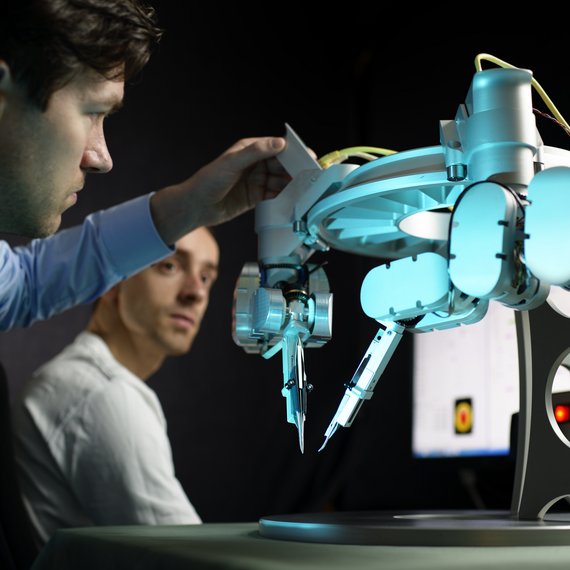Date
Thursday December 12, 2019 from 3:00 PM to 6:00 PMLocation
TU/e CampusOrganizer
High Tech Systems CenterPrice
Free of chargeWhere people from science and industry come together around a topic
Program
| 15:00 - 15:05 | Welcome |
| 15:05 - 15:15 | HTSC Robotics Update |
| Jesse Scholtes - program manager Robotics - TU/e | |
| 15:15 - 15:40 | Lazy Tracking of unknown Dynamic Objects for Robust Navigation in Semi-Open Worlds |
| Wouter Houtman – PhD Candidate - Control Systems Technology - dept. Mechanical Engineering - TU/e | |
| 15:40 - 16:05 | Expressivity in Movement: using physical animation to improve the functioning of mobile transport robots |
| Marijke de Geus – lecturer / researcher Human Technology Interaction - Fontys | |
| 16:05 - 16:30 | Importance of Human Aware Robot Navigation in High Throughput Material Handling Systems |
| Bas Coenen – R&D Technology Owner Robotics - Vanderlande | |
| 16:30 - 18:00 | ROPOD Demonstration & drinks |
Abstracts
Lazy Tracking of unknown Dynamic Objects for Robust Navigation in Semi-Open Worlds
Wouter Houtman – PhD Candidate - Control Systems Technology - dept. Mechanical Engineering - TU/e
Current trends in the market of Automated Guided Vehicles (AGVs) demand for increased autonomy in environments that are more dynamic and less predictable, while coping with existing hardware legacy in terms of size, shape, and weight of goods and containers to transport. The ropod-project addresses these problems, having the objective of automating logistic tasks without disruptive changes in the environment and existing workflows. A modular wheel set is developed which can be applied in custom configurations under a vehicle frame. As the wheels can be deployed in various configurations, for large and heavy payloads, multiple vehicles can be deployed to cooperatively transport this payload. In order to deal with the unpredictability in the environment, the geometric properties and the dynamics of arbitrary objects are observed during navigation tasks. By using temporal relations between sensor measurements and, where necessary, using a multiple hypothesis approach to solve occlusions, modeling the entire variety of objects is not necessary. Using sensor-fusion techniques, each object can be semantically annotated using a few observations, requiring significantly less computational workload.
Expressivity in Movement: using physical animation to improve the functioning of mobile transport robots
Marijke de Geus – lecturer / researcher Human Technology Interaction - Fontys
What sets robots apart from other intelligent agents, is that they’re capable of physical movement. As people are highly sensitive to physical movement and spatiotemporal affordances, we argue that robot motion can go a long way towards people’s comprehension and acceptance of robots. In the field of animation a body of knowledge has been established on how to convey any idea, message or intention via motion. The idea of incorporating animation is therefore not new to robotics. However, it is barely visible in today’s world, because the adoption of animation has only been investigated in social robotics. As a result, the growing numbers of implemented robots outside of that category are left to rely on traditional signals like light and sound. To illustrate this case for a movement-centric animation-based design approach, a case study of a hospital transport robot will be presented, showing that this approach cannot only contribute to the acceptance of a robot, a more pleasant environment, but also to a more efficient system.
Importance of Human Aware Robot Navigation in High Throughput Material Handling Systems
Bas Coenen – R&D Technology Owner Robotics - Vanderlande
Bas Coenen is R&D Technology Owner Robotics at Vanderlande, a global market leader for value-added logistic process automation. Bas graduated in 2013 from Eindhoven University of Technology, in the area of Control Systems Technology. During his Master study he specialized in mobile robotics. In his talk, he will give insight in the need of Human Aware Robot Navigation in logistic automation solutions that Vanderlande provides now and in the future.
